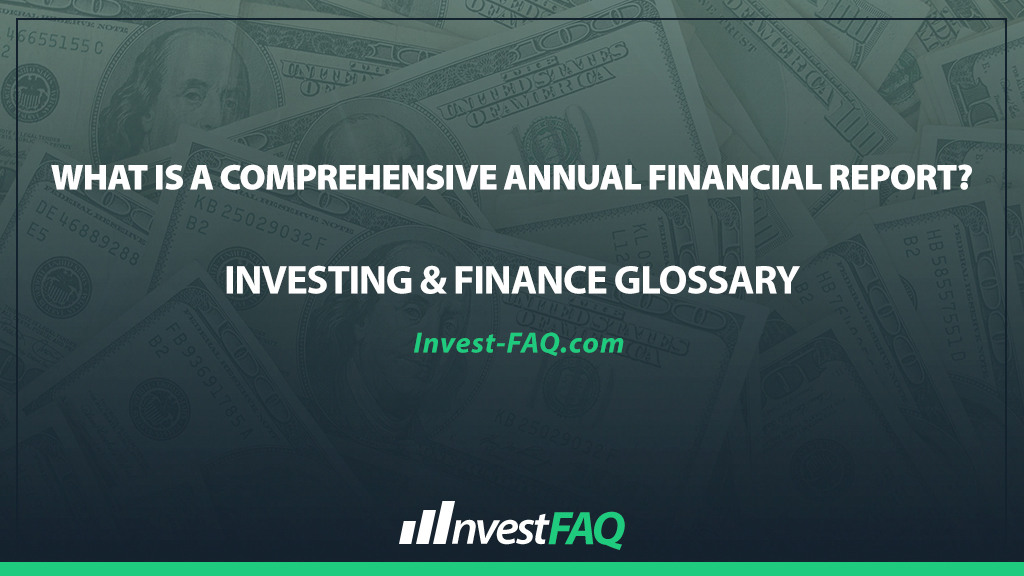
Comprehensive Annual Financial Report in Governmental Accounting
Contents
A Comprehensive Annual Financial Report (CAFR) is a thorough and detailed presentation of a government entity’s financial condition. It goes beyond the basic financial statements to include a wealth of additional information such as statistical data, budgetary comparisons, and narratives explaining financial results, policies, and operations.
The CAFR is used by state, local, and federal governments to provide transparency and accountability to the public, investors, and creditors regarding their financial operations and health.
It is a key tool for assessing how public officials are managing public funds and for making informed decisions on policy, investment, and governance.
Example of a Comprehensive Annual Financial Report in Governmental Accounting
The City of Greenfield publishes a CAFR for the fiscal year ended December 31, 202X. The report includes three major sections:
Introductory Section: This includes a letter of transmittal, the government’s organizational chart, and a list of principal officials.
Financial Section: Comprises the independent auditor’s report, management’s discussion and analysis (MD&A), basic financial statements, and required supplementary information (RSI) other than MD&A.
Statistical Section: Presents additional financial, economic, and demographic data in a multi-year format, providing a broader context to the financial statements.
In the City of Greenfield’s CAFR, the introductory section sets the stage, offering an overview and insight into the governance and organizational structure.
The financial section is the core of the CAFR, where the independent auditor’s report provides an objective analysis of the financial statements’ accuracy and compliance with accounting standards. The MD&A offers management’s perspective on the financial condition, and significant changes in financial performance.
The statistical section, by presenting data over multiple years, enables trends analysis, offering insights into the financial health, operational efficiency, and socio-economic conditions affecting the government entity.
Significance for Investing & Finance
The significance of a CAFR in governmental accounting cannot be overstated:
Transparency and Accountability: It provides a comprehensive view of the government’s financial activities, promoting transparency and holding public officials accountable for the management of taxpayer funds.
Decision-Making: The detailed financial and statistical information helps policymakers, citizens, and investors make informed decisions regarding governance, investments, and community development.
Benchmarking and Analysis: Governments can use CAFRs to benchmark performance against past years or comparable entities, identifying areas for improvement or strategic investment.
Compliance and Standards: Preparing a CAFR ensures that government entities adhere to high standards of financial reporting, including compliance with the Governmental Accounting Standards Board (GASB) guidelines.
In summary, the Comprehensive Annual Financial Report is an essential document in governmental accounting, providing a detailed and transparent overview of a government entity’s financial condition and performance.
Its comprehensive nature serves the dual purpose of promoting accountability in public finance and serving as a tool for informed decision-making by stakeholders both within and outside the government.
FAQ
What is the purpose of a Comprehensive Annual Financial Report (CAFR) in governmental accounting?
The CAFR provides a thorough overview of a government entity’s financial condition, offering detailed information on its financial activities and balances for the fiscal year, designed to ensure transparency and accountability in government finances.
How does the CAFR differ from a standard financial report?
Unlike standard financial reports, the CAFR includes not only the entity’s financial statements but also extensive background information, statistical data, and a narrative section that provides context for the financial information, presenting a more comprehensive view of the entity’s fiscal health.
Who is responsible for preparing and publishing the CAFR?
The government entity’s finance department, typically under the guidance of the chief financial officer or a similar official, is responsible for preparing and publishing the CAFR, ensuring accuracy and compliance with governmental accounting standards.
What key sections are typically included in a CAFR?
A CAFR usually comprises three main sections: the Introductory Section, providing an overview and organizational information; the Financial Section, detailing the entity’s financial statements and independent auditor’s report; and the Statistical Section, offering additional financial and demographic data to contextualize the financial information.
